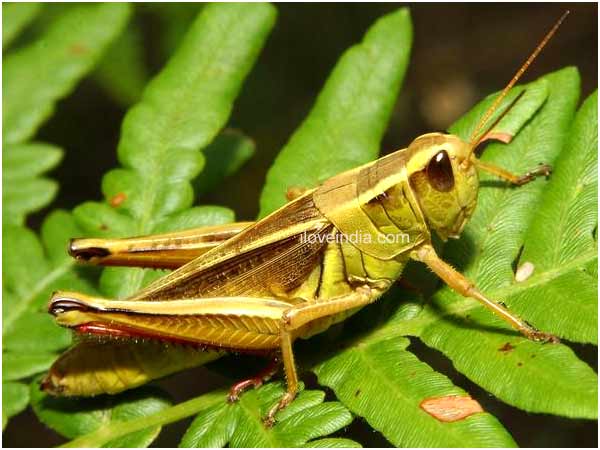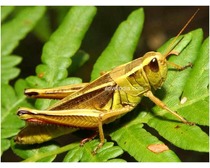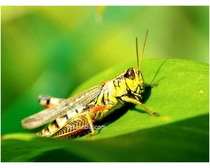Grasshoppers are insects of the suborder Caelifera in the order Orthoptera. Explore some more interesting facts and amazing information on grasshopper.
Facts About Grasshopper
The term grasshopper is taken to represent as many as 9,000 different species of singing, jumping insects in two families of Orthoptera order. Winged insects, with powerful hind legs and strong mandibles, or mouthparts, they can be categorized into two groups - long-horned grasshoppers (family Tettigoniidae) and short-horned grasshoppers (family Acrididae). Talking about the anatomy of a grasshopper, it has two pair of wings - the front pair comprises of rigid wings, while the hind pair has larger, membranous wings (often bright in color). The insect has three pairs of legs, all of which are used for walking purposes. Want to explore some more interesting facts and amazing information on grasshoppers? Explore the lines given below.

Facts About Grasshopper
Kingdom: Animalia
Phylum: Arthropoda
Subphylum: Hexapoda
Class: Insecta
Order: Orthoptera
Suborder: Caelifera
Superfamilies: Eight
Length: ½ to 4 inches (1-10 cm)
Interesting & Amazing Information On Grasshopper
- Some of the species of grasshopper have been known to benefit farmers. For instance, Turnbull’s grasshopper of the Prairies consumes the plants that are considered by humans. Then, there is the two-striped grasshopper that eats plants toxic to cattle.
- The main predators of grasshoppers include flies, birds, coyotes, skunks, reptiles, rodents, mantids, beetles and spiders. They might also be attacked and killed by the maggots of parasitic flies.
- Long-horned grasshoppers are known to have antennae that are longer than the body. As for the auditory organs, they are located on the forelegs.
- Short-horned grasshoppers, as the very name suggests, have antennae shorter than their body. In this case, the auditory organs are located on the abdomen.
- Amongst the smallest grasshoppers in this world are pygmy grasshoppers, which measure less than ¾ inches (20 mm) in length.
- More often than not, grasshoppers mate in the fall. Following this, the female lays the eggs in the ground or in plant tissues.
- The hatched grasshoppers differ from the adult ones only in terms of the smaller size and absence of wings.
- The young grasshoppers have to go through a number of molts (shedding of old body coats and growing new ones), before they become a winged adult.
- During the molting process, a grasshopper swallows air, in order to build up pressure in its body to split the old cuticle.
- The exoskeleton produced as a result of a grasshopper’s molting is a perfect replica of its body. It comprises of the grasshopper's antennae, eyes, insides of the mouth and even anus!
- Majority of the grasshoppers feed on plants, with crops like wheat, barley, corn, rye, and oats being the most prefer options.
- In a single jump, grasshoppers can go up to as much as 20 times their body length.
- At the time of rest, the hind pair of wings of a grasshopper folds and gets covered by the front pair.
- In all the species categorized as grasshoppers, both the sexes possess auditory organs.
- Some of the grasshoppers have been noted to spit 'tobacco juice', a brown, bitter liquid, as a part of their defensive behavior.


See also
More from iloveindia.com
- Home Remedies | Ayurveda | Vastu | Yoga | Feng Shui | Tattoos | Fitness | Garden | Nutrition | Parenting | Bikes | Cars | Baby Care | Indian Weddings | Festivals | Party ideas | Horoscope 2015 | Pets | Finance | Figures of Speech | Hotels in India : Delhi | Hyderabad | Chennai | Mumbai | Kolkata | Bangalore | Ahmedabad | Jaipur
- Contact Us Careers Disclaimer Privacy Policy Advertise With Us Lifestyle Sitemap Copyright iloveindia.com. All Rights Reserved.




